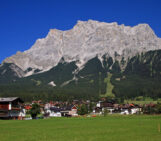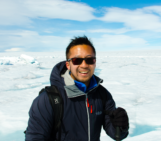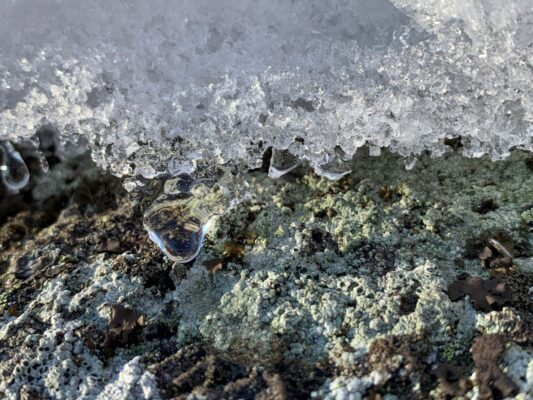
Retreating glaciers, shrinking sea ice or thawing permafrost – many of you might have witnessed formerly familiar landscapes being transformed by climate change over the last years, maybe even beyond recognition. And perhaps these undeniable changes have left you feeling sad, angry or anxious about the future, fearing what lies ahead. But did you know there is an entire academic field out there researching the emotions evoked by the impacts of climate change? To learn more about it, I talked to Inkeri Markkula, an interdisciplinary researcher on ecological emotions at the University of Lapland.
Leah: Inkeri, in your work you explore both the ecological and cultural impacts of climate change. Could you tell me a bit more about the projects you are currently working on?
Inkeri: I am currently working on a project called ‘Meanings and memories of snow and snow grief’. In this project, I research the different meanings people attach to snow, which memories they have about it and what thoughts and feelings snow change and loss evokes in them. Apart from this, I also study human-animal relations and their link to snow and climate change. For this, I interviewed volunteers supporting the conservation of the Saimaa ringed seal, an endangered species living in just one lake in Finland. Climate change is interfering with the species’ breeding success as it requires a sufficient ice and snow cover of the lake to securely build nests. Now, its survival depends on snowbanks built by volunteers. But the common thread running through my work is the connection between climate change and emotional responses to it.
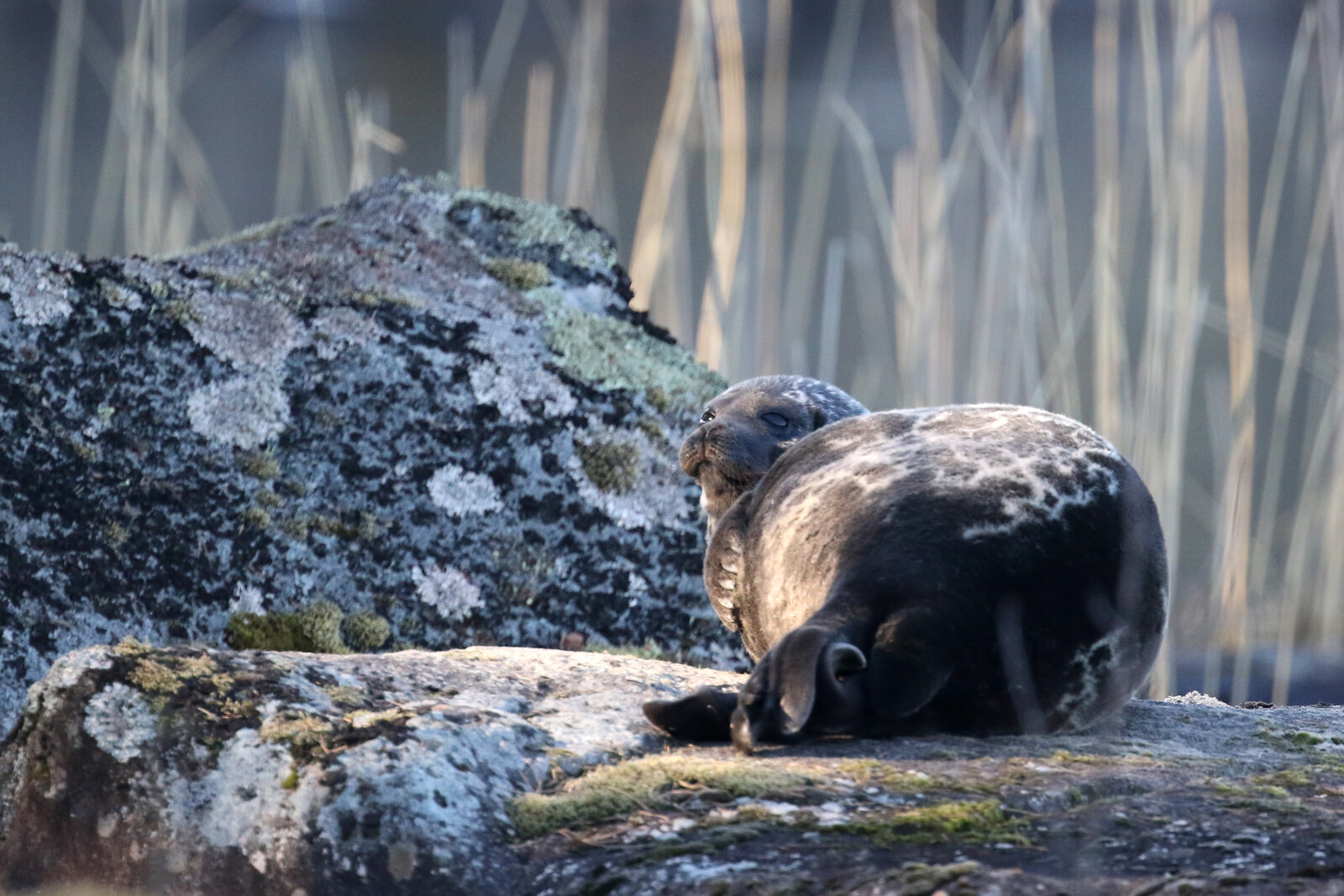
The Saimaa ringed seal. It can only be found at Lake Saimaa, Finland. [Credit: Jyrki Normaja/Vastavalo]
Leah: Looking at your published work, I saw that you – among other things – worked on soil ecology and permafrost as well as ecological grief among Sámi reindeer herders, so you have a quite diverse and interdisciplinary background. What did your journey of becoming an interdisciplinary researcher look like?
Inkeri: I started studying in the department of cultural studies but changed to environmental science and biology and did my PhD on soil ecology and permafrost. But as I have this diverse background, I ended up working in interdisciplinary projects, for example in the Sámi homeland in the northernmost part of Finland. There, I encountered the issue of ecological grief for the first time as the Sámi reindeer herders expressed feelings of sadness and grief in the face of climate change and its impact on their lives. At that point, I didn’t even know the word for it but later learned that there is a whole academic field of ecological grief studies. I got really interested in this, also because I could very much relate to this feeling myself. This is what I now really want to focus on and even started to study psychology at the open university to better understand ecological emotions.
Leah: In this field of ecological grief studies, how do researchers define the concept of ecological grief?
Inkeri: I mostly use the definition by Ashlee Cunsolo, who defines ecological grief as a natural response to ecological degradation and loss, especially among people whose lives and cultures are closely intertwined with the natural environment. It can be caused by either directly experiencing or anticipating ecological losses such as the decline of species and ecosystems or the loss of landscape meanings. However, it is always a bit tricky with these concepts. For example, I do like to use the concept of snow grief, but I also realized that snow evokes many different feelings. Beyond this, ecological grief often coexists with other feelings such as anger, worry and concern. This is why I think it could be beneficial to rather use the term ecological emotions, which acknowledges the complexity and interconnectedness of emotions.
Ecological grief can show us what we care about, what we value, and that non-human species are worth grieving for.
Leah: Why is it important to investigate the emotional dimension of how individuals and communities experience climate change?
Inkeri: I think it is important for multiple reasons. For one thing, many people, especially young ones, experience and struggle with climate anxiety. To deal with these emotions, it is important to create spaces to talk about them and provide therapists with tools to treat people suffering from them. Especially, as it is not merely an inner issue but a response to something that is wrong in the world and in this regard a bit different to other mental health problems. More research into ecological emotions could provide a basis for this. Also, this research could amplify voices that have often been ignored. Indigenous people in the Arctic have long expressed feelings of grief as they witnessed their environment changing and their culture being threatened. And this hasn’t been taken seriously enough in the past. For me it is also important to mention that experiencing these negative emotions does not render people passive since studies have shown that ecological grief and other eco-emotions can inspire action (two of these studies can be found here and here). I could actually observe this in the volunteers helping the Saimaa seal. Many of them described grief and anxiety as something that motivated their involvement in conservation efforts. Hence, these ecological emotions can be important due to their empowering nature and should not be suppressed. Overall, ecological grief can show us what we care about, what we value, and that non-human species are worth grieving for. There is this idea of shared vulnerability and responsibility for climate change that is at the heart of ecological grief.
There is this idea of shared vulnerability and responsibility for climate change that is at the heart of ecological grief.
Leah: As you already said, emotions can be quite complex, and they can manifest differently in people and come in different forms. Hence, I was wondering if you also observed different forms of ecological grief during your research?
Inkeri: On the one hand, I saw grief arising from present and ongoing losses, for example in response to a forest that has been clear-cut. But on the other hand, there is also anticipatory grief, where people grieve for something still to come. An example for this would be feeling sadness upon realizing that one’s children might not be able to play in the snow or have a proper white winter. And then there is grief connected to the loss of culture or traditional knowledge, which is quite common among indigenous people but also among Finnish people in general. Snow is such an important part of the Finnish and Sámi culture and there is a lot of traditional knowledge on weather and snow in the winter, which might be lost in the future. And on an individual level, ecological grief can lead to mental health problems such as depression in some people, while it inspires action in others.
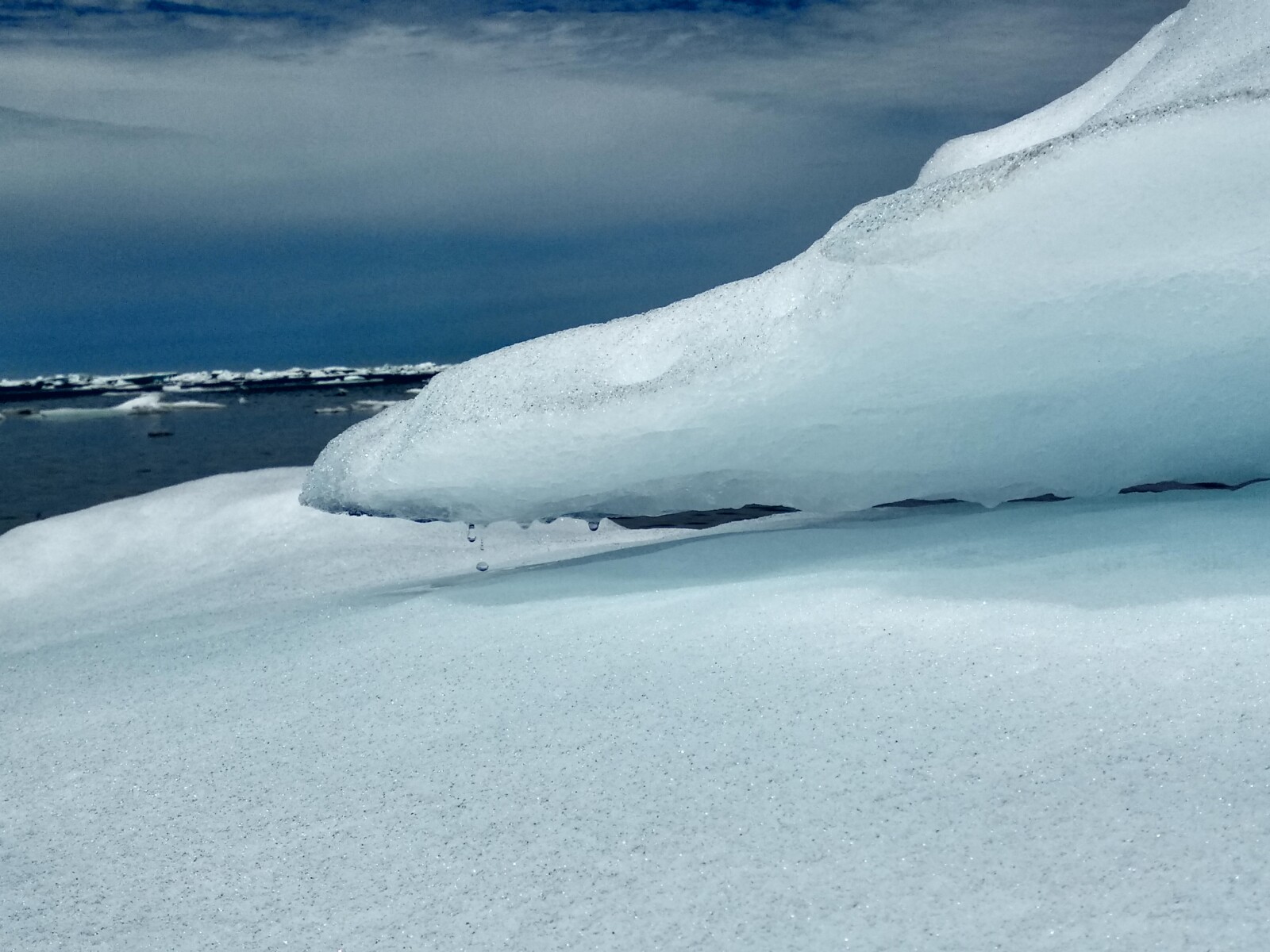
Melting sea ice in Kuujjuarapik, Hudson Bay, Quebec, Canada. [Credit: Maria Scheel, distributed via imaggeo.egu.eu]
Leah: And now that you are also working in the field of ecological grief studies, what impact do you hope your work will have? And who should engage with your research?
Inkeri: I really hope that decision-makers read these studies. I am not the only one who has been writing on these topics, and it would be advisable for people making decision on the use of natural resources to engage with these studies because ecological grief really shows what is meaningful for local people. Apart from this, this research could make scientists working in the Sámi homeland more aware of the Sámi culture. I want to show that it is important to talk to people as well as listen to them and do not decide over their heads in matters of land use among other things. However, the current situation in the world leaves me quite hopeless at times and makes me question what I can actually achieve with my work. Sometimes, it feels more like documenting and archiving the feelings of me and other people for generations to come. Nevertheless, I hope that raising awareness of ecological grief will help people to recognise their own feelings and makes it easier to discuss them openly. I also hope that recognising ecological grief can lead us towards a future where we take better care of our fellow species. I would like to quote J. T. Bardnett here: “A sense of anticipatory grief, a foreboding feeling of preemptory pain for potential loss, animates our efforts to protect our fellow travellers and the land, ecosystems, and earth systems upon which we collectively depend.”
By expressing grief, scientists can show that they deeply care about the species and ecosystems they are studying, and that they see the more-than-human world as lamentable.
Leah: Many members of the EGU Cryospheric Science division are natural scientists and some of them might not have encountered the topic of ecological grief yet. What would you say, why should we as scientists interested in the cryosphere think about ecological grief?
Inkeri: I experienced these feelings of grief for so long that discovering there was a whole academic field dedicated to it was a huge relief and made me feel less isolated. I believe that learning about ecological grief could have the same effect on other scientists struggling with feelings like sadness or anxiety. Also, I think it can be a great starting point for researchers to reflect on their own feelings. Especially in the natural sciences there is this question of objectivity. Sometimes people assume that there should not be a place for emotions in good science. However, I would argue emotions are always present, whether we acknowledge it or not – we are humans after all! And you can do good science, even though you feel sad about the things you document and study. There are studies (for example this one) showing that some scientists are indeed struggling with fear or grief and might sometimes even need help to cope with these feelings. Still, many believe that scientists do not need support in managing their emotions and engaging with the concept of ecological emotions within the scientific community could help to overcome this belief. I also think that by expressing grief, scientists can show that they deeply care about the species and ecosystems they are studying, and that they see the more-than-human world as lamentable.
Leah: Next to your academic work, you are also a writer and published the book “The Land that Never Melts”. What is this book about and what motivated you to write it?
Inkeri: This book is a story about two persons belonging to two indigenous communities, one living in Canada and the other in the Sámi homeland, and it is about cultural roots and the loss of arctic environments. It deals with the policies of colonisation and assimilation directed at the indigenous peoples of Canada and the Nordic countries and with the melting of glaciers in the “early” days of climate change, as the timeline of the story runs from the 1960s to 2003. The book is also a story of belonging, homesickness, freedom, and love of northern nature. I always wanted to write books, ever since I was seven years old, but different experiences motivated me to write this particular book. One of them was an encounter with a person in Canada – some of his experiences, I tried to bring into this book as well as my own biological research. Also, many people I met during research interviews inspired me to tell their stories.
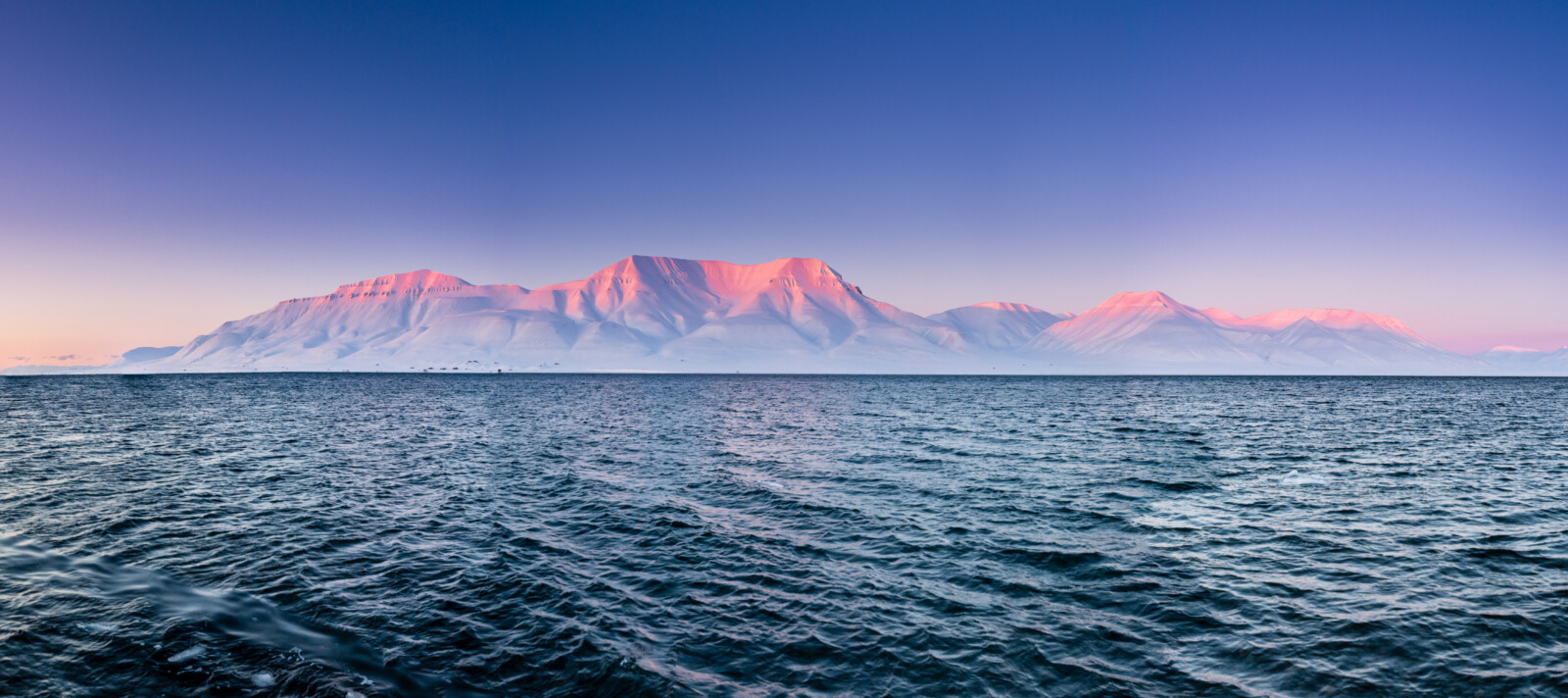
Ice-free Adventfjorden in Svalbard in March 2017. [Credit: Erik Kusche, distributed by imaggeo.egu.eu]
Leah: Personally, I am very interested in exploring different ways of climate communication. And I believe that novels or creative non-fiction work (e.g. “The Quickening” by Elizabeth Rush, a review of this book can be found in this Cryoblog post) are very important as they can make climate change experienceable and allow individuals to relate it to their own lives – something that cannot be achieved by presenting scientific facts alone. Is this something that also plays a role in your writing?
Inkeri: One starting point for my writing was my frustration that many scientific facts went unnoticed and unheard. In 2006, I lived in Svalbard doing my master thesis and I was very irritated because in the Arctic we could clearly see the signs of a warming climate, but no one seemed to care, there was very little media coverage at that time. I could see the sea from my window at the university and it was the first time there was no ice on the fjord, it was completely unfrozen the entire winter! This was a major motivation to write this book because it is just sad that scientists told the world what is happening in the Arctic, that indigenous people told the world what is happening in the Arctic, but the world did not listen. With this book, I hope to reach a wider audience than I could do with my research alone to maybe get people to listen. And it might work – many people have told me that they have learned a lot from the book.
Leah: Thank you so much for your time! Now I am really curious to read your book and hope that many readers of the blogpost are as well!
Further resources
- Resources to deal with climate anxiety provided by Psychologists for Future: https://english.psy4f.org
- The Process of Eco-Anxiety: How to cope with eco-anxiety and other difficult eco-emotions? https://www.ecoanxietyprocess.com
- Snowless Finns suffer “eco-grief”. An article about experiencing grief about snow losses. https://yle.fi/a/74-20127582
- Climate change and happiness. A podcast about personal experiences with climate change. https://climatechangeandhappiness.com
Edited by Maria Scheel


